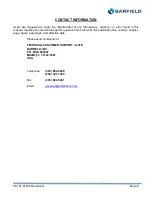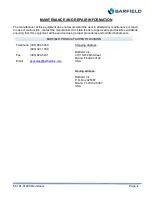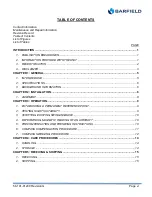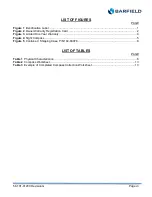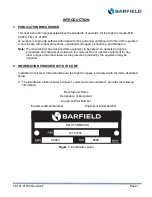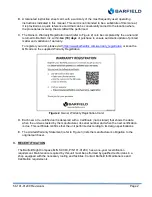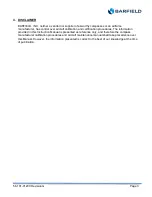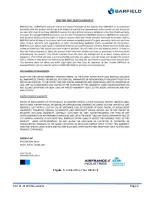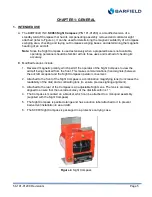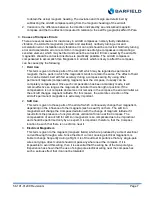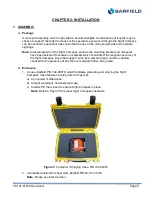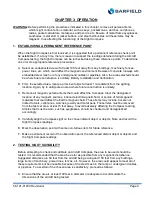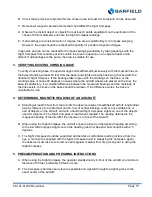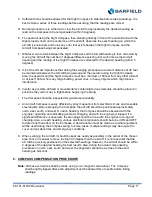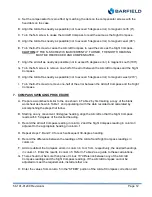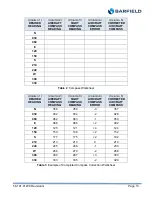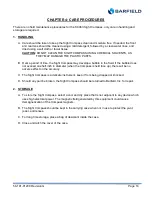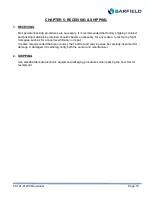
56-101-01200 Revision G
Page 10
B. Check that a prominent object within the chosen area (at least a mile distant) can be observed.
C. Remove all magnetic personal items that could affect the Sight Compass.
D. Observe the distant object or objects from at least 8 points equidistant on the perimeter of the
chosen 100-foot diameter and note the Sight Compass readings.
E. If all readings are consistent within 1 degree, the area is satisfactory for Compass swinging.
However, the area should be rechecked frequently for possible magnetic charges.
In general, an area can be checked for Compass swinging suitability by taking bearings with the
Sight Compass from random positions within the area in question on an object at least a mile
distant. If all bearings are the same, the area is suitable for use.
3. VERIFYING EXISTING SWINGING BASE
To verify an existing base, the operator aligns himself/herself successively with the marked lines on
the base (standing at least 50 feet from the base) and sights along the line being checked with the
handheld, Sight Compass. If the bearings taken agree with the markings on the base, or the
markings plus or minus 90 degrees (in cases where the aircraft wheels are placed on the line), the
base is satisfactory. If a constant difference between the measured bearings and the markings of
the lines exists, the lines on the base should be redrawn. If the difference varies, the base is
unsuitable for use.
4. DETERMINING MAGNETIC HEADING OF AN AIRCRAFT
A. Standing at least 30 feet from the aircraft, the observer aligns himself/herself with its longitudinal
axis by reference to a radio mast and fin, row of central fuselage rivets or any suitable line or
pair of objects on the Aircraft, and with a handheld Sight Compass, sights on one of the objects
used for alignment. The Sight Compass is read when steadied. The reading obtained is the
magnetic heading of the aircraft if the observer is in front of the aircraft.
B. When using the Sight Compass, the a
ircraft’s nose is placed on the desired heading according
to the Aircraft Compass. Alignment on the heading need not be exact but should be within 5
degrees.
C. The Sight Compass should be supported and held at a comfortable reading distance from the
eye. A monopod is supplied with the Sight Compass to aid in steadying the Compass. Again,
the observer must take care to remove all magnetic material from his person prior to using the
Sight Compass.
5. PRECOMPENSATION AND PRESWING INSTRUCTIONS
A. When using the Sight Compass, the operator stands directly in front of the aircraft at a minimum
distance of 30 feet, preferably 50 feet or more.
B. The Compass is held as nearly level as possible and sighted through the sighting lens to the
exact center of the aircraft.

